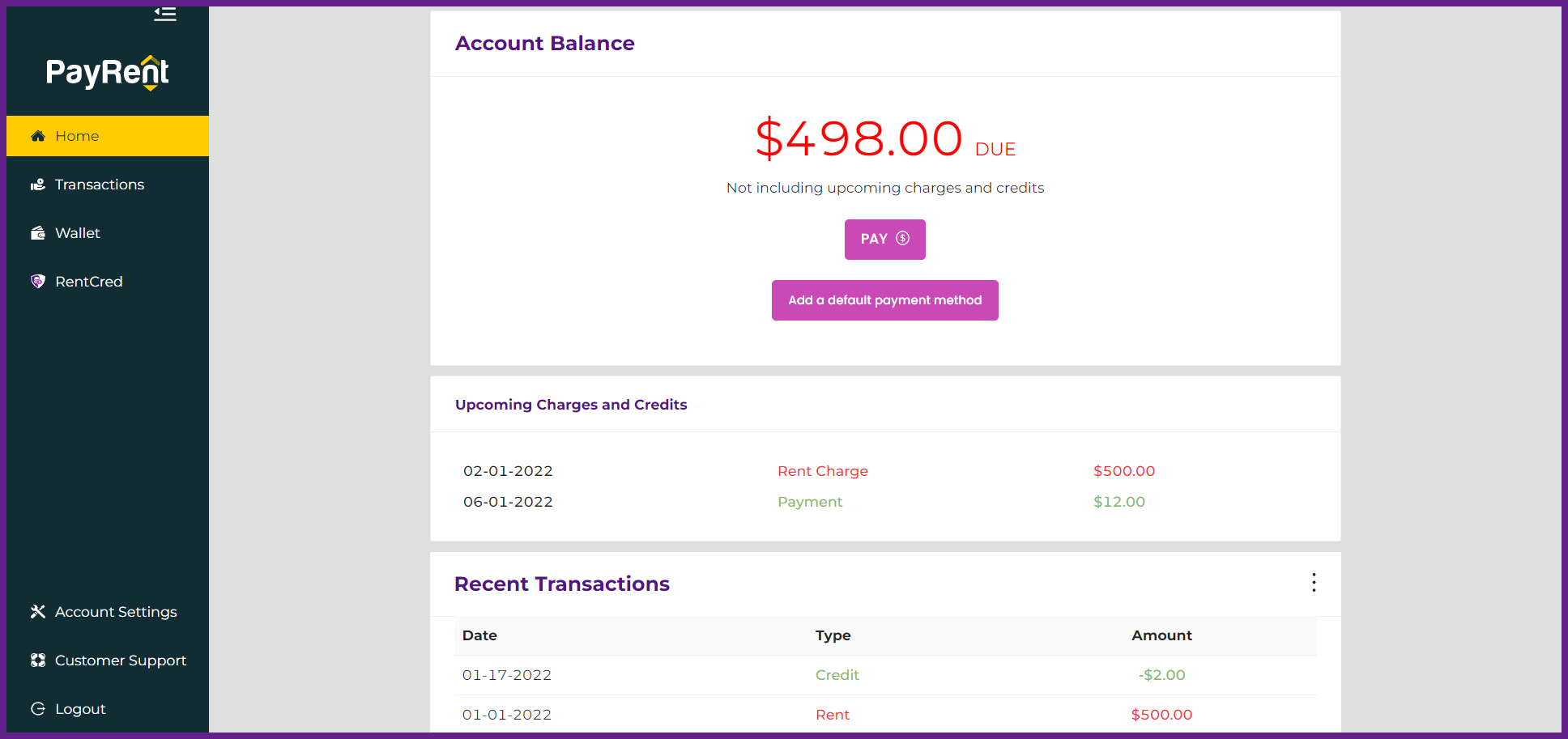As a landlord, it can be difficult to decide how to accept payments online from tenants. Common collection methods include setting up a tenant payment portal, using applications such as Zelle or Venmo, and collecting checks or cash payments.
In today’s technology-forward society, most people lean towards making payments online. Landlords who continue to accept paper checks and cash are at a disadvantage. If you’d like to set up a tenant payment portal, read on to discover how.
What Is a Tenant Payment Portal?
If you’re considering how to accept payments online from tenants, a tenant payment portal is definitely the right way to go. A tenant payment portal is a website designed to allow tenants to pay their rent online using either bank transfer (ACH) or debit/credit card.
The system itself is designed to be safe and secure when collecting online payments. Each tenant is provided with a login that is associated with their rental contract. Once payment is made, it is directed to the landlord’s bank account.
Using a tenant payment system for collecting rent is a great way to minimize the back-end office needs usually required in rental accounting. Rather than accepting manual payments such as paper checks or cash, payment is directly credited to a tenant’s account via the portal.
There is no need to tediously attribute each collection to a renter via an Excel spreadsheet or paper ledger.
Tenant payment portals allow landlords to quickly identify who is late with their rent each month. This approach can speed collection times by setting up overdue payment notifications that can be instantaneously sent to renters. Depending on the features of the tenant payment system, there may be other advantages as well.
Balance Tracking and Payment History
When you’re considering how to accept payments online from tenants, one important feature to consider is balance tracking.
Balance tracking allows landlords to quickly identify the balances of their tenants as they come due. If payment is not received by the due date, a report can be run that identifies the tenants who have not paid and the current amount due.
While balance tracking is great for landlords, it is a positive for renters as well. They can easily log into their account to view their current rental balance. They may also access a statement of prior rents paid.
If they find that their payment records don’t agree with the amounts in the portal, they can easily reach out to the landlord to discuss the balance tracking discrepancy.
How to Set Up a Tenant Payment Portal: Accepted Payment Methods
Typically a tenant payment system (such as the PayRent Tenant Portal) will accept payments via ACH bank transfer or credit/debit card. Most individuals have a bank account attached to a debit card and can easily make their payments online through the portal.
PayRent Tenant Portal does not allow payments through cash apps such as Zelle or Venmo because these apps typically do not allow transfers above a certain threshold. This limit can be confusing for landlords, as they may receive multiple payments through these apps from the same renter. Those apps are not allowed to avoid the difficulty of applying a number of split payments to tenant accounts.
Since checks are not commonly issued by banks anymore except via request (and for a fee), they are also not allowed for payment purposes either. However, ACH transfer is similar to checks in that it involves a direct transfer of funds from a tenant’s bank account within 2 to 3 business days. An ACH transfer is set up using a bank’s routing number and the individual’s bank account number.
Credit Reporting
Using the PayRent Tenant Portal, renters can choose to opt in to credit reporting. This feature allows renters to automatically report their payment status to the three major credit reporting bureaus.
For renters who may not have a significant credit history, this is a great way to improve their credit score. It also acts as a deterrent to late payments, as tenants will likely want to keep their credit scores healthy and not have any overdue payments reported.
How to Accept Payments Online from Tenants
Establishing a tenant payment system is easy using the PayRent Tenant Portal. PayRent Tenant Portal allows landlords to enroll for a free trial period. There are various plans available, including one that remains free of cost and two others that provide additional features that landlords with multiple tenants may utilize.










